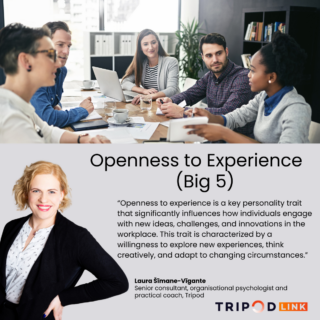
With an ever-changing business and social landscape, organisations need to constantly adapt in order to remain well-functioning and sustainable. Risk management is often a key factor in coping with these challenging times. Conventionally, risk management focuses on financial and strategic risks, but more and more organisations are realising that employee wellbeing plays an important role in managing organisational risk.
What is wellbeing at work?
Wellbeing is often understood as simply the health of employees, but we know from the literature and best practice in the most successful organisations that it is more than that. Wellbeing includes work-life balance, job security, an open management culture, a motivating work environment and opportunities for development.
What risks does well-being manage?
Risk management is important first and foremost in preventing risks and reducing their impact. Mapping employee wellbeing as a risk management strategy helps organisations to prevent and reduce a range of risks:
Limited development opportunities at work: we don’t always have to think of development opportunities as just going up the career ladder. We should not always think of career progression as just a career ladder. Instead, employees expectations are often more related to horizontal development, where they want to take on more responsible and important tasks in a specialist position. Over the last few years, we have seen this very aspect of wellbeing influencing employees general attitudes towards their organization. From Tripod analyses, we have observed that it is the consideration of leaving and the recommendation of the organization in terms of the eNPS (recommendation index) that is strongly influenced by the availability of development opportunities.
Stress and burnout: We know from our own analyses and from the scientific literature that low well-being is associated with higher levels of chronic stress and burnout. For different employees, different issues can be major contributors, but the most common are relationships with the immediate supervisor, lack of recognition and feedback, perceived lack of fairness in the pay received, and distrust of management. As the range of issues is so broad, it is important for organisations to periodically assess the level of employee well-being across these issues. It is then essential to actively address the necessary issues for improvement in the period between surveys.
Challenges related to cooperation: one of the most important elements of employee mental well-being is well-functioning teams and smooth cooperation. One of the key elements of a well-functioning workplace is a good team and well-being at work. Dissatisfaction with one’s internal partners often has a negative impact on mental well-being at work. Negative atmospheres, both within the team and between units, are a direct source of dissatisfaction for employees, which in turn contributes to feelings of burnout. Well-functioning teams, open communication and feedback enhance employees mental and professional well-being. This, in turn, promotes a more positive outlook for the employer in general.
Summary
Embedding wellbeing in risk management strategies is an important step for organizations that want to ensure a safe and pleasant working environment for their employees. This contributes to the success and sustainability of the organization as a whole. A holistic approach to employee wellbeing helps to prevent and reduce risks, improve employee satisfaction and performance, and create a positive and supportive working environment.
If you are interested and need more info in managing your organization’s wellbeing more consciously, contact us at info@tripodlink.lv







